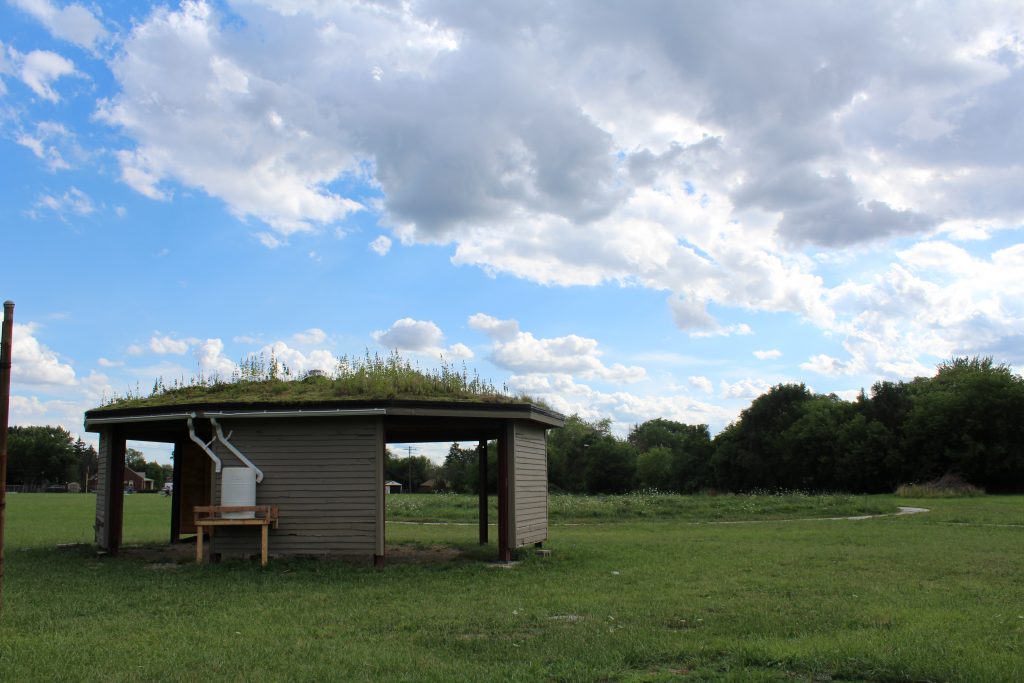How Can Parks Create Habitat and Help Improve the City’s Environment?
Parks and sustainable design cost money, but pay health and beauty dividends in city parks.

Edible roofs, pavement that re-absorbs stormwater, butterfly habitats.
All three features are possible in parks, but aren’t necessarily done because of budgetary reasons.
As part of WDET’s Parks Project, Sandra Svoboda speaks with Alicia Bradford, Detroit’s director of parks and recreation about how and where the city has been able to incorporate environmental sustainability into design of park areas.
Alicia Bradford: By just Detroit parks being a natural green space, what we’re doing is creating just a natural environment, ecological-type of education system when we’re developing and designing our parks. For instance, at Joe Prance (located within Rouge Park) where we have natural environment of trail area within the woods and also a butterfly garden. Just to be able to learn the ecology of a particular park or at Calimera where we have an edible roof on the shelter. So, to be able to provide the carbon monoxide, reduce that footprint across the city as well as do some education for horticulture or produce growth within the city.
Sandra Svoboda: Let me go back to the edible roof for a moment. Tell me about some of the green building strategies like that you’ve been able to do.
AB: That’s one that we’ve been able to do and that was in a partnership with CPAD (community+public art: Detroit), and the community there that came with a proposal in order to create that. When we look at our design, we’re trying to move to instituting green efficiency type projects and of course we do that when we’re putting in our playscapes as best as possible. We would like to install porous flooring or parking lots so the rain would have somewhere to absorb and run off as opposed to a strict concrete area. When we’re looking at updating and improving our parks and even creating new parks, we’re starting to look at those types of LEED industry standards when we’re looking for green efficiency.
SS: Why aren’t more of those done?
AB: It’s about dollars. We want to be good stewards of our park stewards of our park spaces and definitely the environment, but it’s about dollars. When we’re looking to parks and improving, and we’re looking if we want to put a walking path or a playscape, and when it gets down to decisionmaking, it will reduce what we’re able to provide as far as amenities if we were to focus large scale on green industry trends, which we’re not discounting that but it is about dollars and what we can do, and something may be sacrificed in order to be able to do that particular project.
SS: So the green building is actually more expensive you’ve found?
AB: They are more expensive even though they’re more ecologically responsible but they are more expensive so we may not be able to a complete project or we may not be able do particular elements within a park improvement, moving toward that as best we can incorporate green efficiencies in any of our park designs any of our structures that we may use, then that’s what we’ll do.
SS: With the funds that have been freed up for the city and the finances going forward after the Plan of Adjustment was adopted (as part of the emergence from bankruptcy), how much flexibility will you have to be able to do that in future with new parks and redesign of parks for the city.
AB: Because of that we probably will have a little bit more flexibility, not a lot. We may focus on just a specific number of parks in order to incorporate green efficiency type elements within those locations. But really, in order to improve our 308 parks across the city and as we’re looking at our strategic master plan, we’d like to have and touch every neighborhood that’s viable and has a huge population of seniors and youth, and that still have a high density of residents in order to touch and improve their park. Some of those things we may have to compromise or sacrifice in order to provide a quality improved park for the neighbors.
